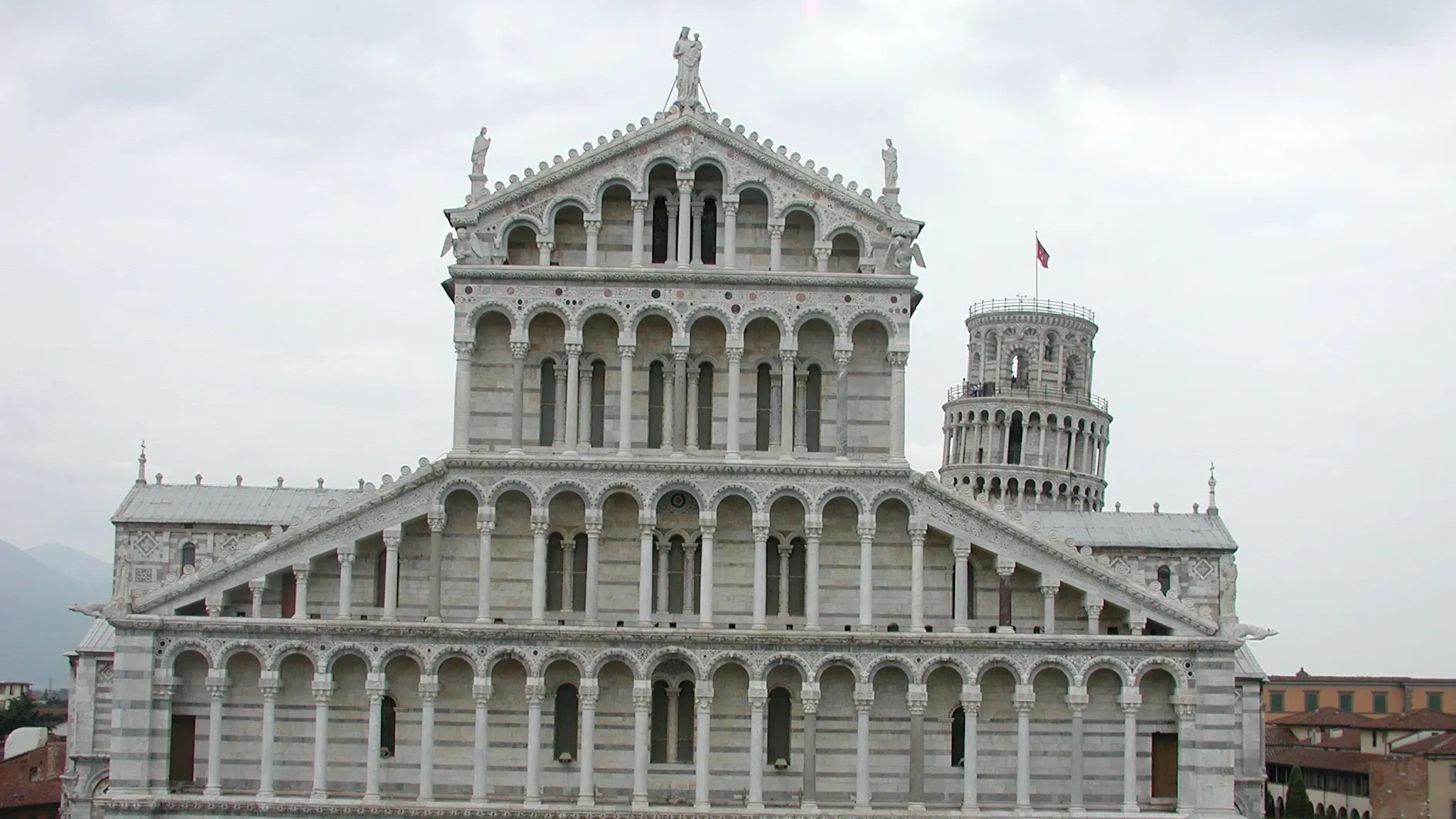
2004 June
Feeling a bit exhausted from the previous evening, we rose a bit later than usual and indulged in a hearty breakfast before hitting the road. According to our itinerary, we had a long distance to cover as our hotel was booked in Florence.
We opted for a train journey to La Spezia, which proved to be crowded, gradually packing in more passengers at each station in Cinque Terre but surprisingly clearing out after crossing Riomaggiore. A brief wait at La Spezia ensued, a common occurrence in Italy where trains can experience delays ranging from a few minutes to hours.
On our way to Florence, we strategically planned a stop at the remarkable 180 feet high Leaning Tower of Pisa for a quick photo opportunity, considering our time constraints for exploring top sights.
In Pisa, we securely stored our luggage in the railway station’s locker room and hopped on a local bus to reach the “Duomo,” providing us with a swift glimpse of this historic city. Pisa is also renowned for its prestigious university. Disembarking from the bus, we were met with a bustling entrance filled with hawkers and souvenir shops—a common sight in Italy, where individuals from North African countries attempt to entice tourists with fake designer bags and sunglasses.
After years of restoration, the Leaning Tower of Pisa now allows visitors to climb its 500-plus stairs for a breathtaking view and a unique experience. However, there was a small catch – we were informed of a five-hour wait for our turn. Exhausted from yesterday’s hiking and discouraged by the long queue, we decided to forego the idea.
Within the same campus, three other key buildings constructed around the same time awaited exploration. The bell tower appears to lean only when referenced against its surroundings. Our exploration commenced with the cathedral (duomo), influenced by Byzantine architecture with magnificent red tiles on top.
Next on the list was the Baptistery, renowned for its acoustics. We were fortunate to witness a group visiting at the same time, with one member delivering a beautiful song. Though we couldn’t comprehend the lyrics, we experienced the power of music—a superb impromptu performance that left everyone inside in pin-drop silence.
We then visited the Camposanto (cemetery), collectively guarded by a wall known as the Field of Miracles. With some free time on our hands, we engaged in playful pictures attempting to give a push or hold up the tower.
Returning to the station, we retrieved our luggage and boarded a train to Florence. The view from the train was spectacular as we crossed the Arno River multiple times. The lush green of wheat fields against a backdrop of mountains was incredibly scenic, especially with the sun setting in the west.
The Arno River is famous as it flows through the renowned Tuscany region. For some, the Arno divides Italy into north and south, reflecting vast political and socio-economic differences between the two regions.
Tip: European trains adhere strictly to schedules, unlike people following Indian stretchable time. It’s advisable to have some extra time on hand as they close the train doors 5 minutes before departure.
